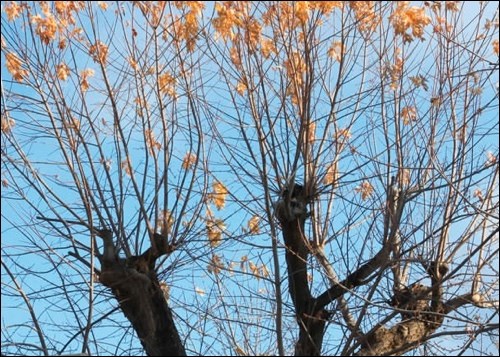What we are really short of in the Battlefords and area are ISA certified arborists pruning trees for homeowners. Other than the ISA certified arborists that currently work at the City of North Battleford or that formerly worked at the City of North Battleford, there are none that I’m aware of.
An arborist is defined as someone who is “a specialist in the care and maintenance of ornamental trees.”
The International Society of Arboriculture Certified Arborist credential is the world standard, the Canadian standard, the provincial standard and should be the minimum standard right here in the Battlefords for anyone to have that you hire to prune your trees.
You can verify whether or not someone is ISA certified by going to www.isa-arbor.com and hit the Verify a Credential hot button, or if you are looking to hire a certified arborist you can go to that same website and hit the Hire an Arborist hot button and it will find the certified arborist closest to your location.
So many self-professed tree pruners are either self-taught or might be just making it up as they go along and convincing the customer they know what they are doing. After all, they probably have a truck, a ladder and a chainsaw, so they should know. There seems to be very few of them who have actually taken the time to read and learn proper pruning techniques, let alone get certified.
With all the information and even just pictures out there on the web, referring to, or depicting pruning correctly and what and why you prune, how come there so many professionals doing it incorrectly, and so what, anyway, are the consequences of doing it incorrectly?
Here are some simple guidelines
• “Take ‘em apart like they were put together” is a quote from Dr. Ed Gilman, one of my favourite tree gurus. What it means is, whenever you make a pruning cut, it is at a bud or at a branch attachment and never midway between branches or branch and trunk. You must always leave the branch a direction to grow. No dead ends allowed.
• Make your cut at the branch collar. A collar cut ensures decay is minimized and the wound left by the cut will close more rapidly.
• Remove all the dead wood. Remove any branches that don’t look healthy (diseased). Remove broken or weak branches. Remove branches that are rubbing together.
• The 25 per cent rule. Research shows that removing more than 25 per cent of the live branches in any one growing season will result in major root death and decay and or negatively affect tree growth. This will, over time, affect the tree’s general health and, just as importantly, its stability and it will anybody’s guess as to when that tree will fall over.
The other thing that happens if too much live wood is removed from a tree is that you get this proliferation of response growth which is very unnatural looking (and butt ugly), very poorly attached to the tree and pretty much impossible to deal with a few seasons down the road.
It is evident throughout the Battlefords and area that many privately owned trees have been the victims of Whackme- Hackme Tree Service, The Treeminator, Top and Flop Tree Guys, The Tree Feller, The Tree Amigos or some such company.
The problem with this is when tree pruning is done badly or incorrectly often enough in an area, it somehow becomes the norm and what people come to expect a tree to look like after pruning. “Do to my tree what you did to Jack’s tree across the street, he paid good money for that job so it must be right.” This is just wrong.
If you want some easy to read information with some excellent pictures of what a tree should look like before and after pruning go to the Trees are Good website www.treesaregood.com.
It isn’t rocket science, but it is science. There is a best practice for tree pruning just like there is for just about everything.
The science behind proper tree pruning minimizes damage to the tree, minimizes decay above and below ground, minimizes the risk of disease entering the tree, encourages rapid wound closure and general tree health. It leaves you with a tree and not a post with stubs on it.
The science of tree bio-mechanics and natural tree architecture is a field of study that has helped arborists implement natural target pruning and preserve the tree’s ability to withstand damage from storms and maintain the landscape qualities we should all be looking for. Watch this column for information on this.
Tree removal is another matter. There are many good companies in the Battlefords that offer tree removal. You may just want to get a few references and be assured they have the appropriate insurance to cover off damages if something should go wrong with the removal.
Don’t forget April 1 is the start of the provincial elm pruning ban. No elm pruning is permitted, by provincial law, between April 1 and Aug. 31 each year. This is a prevention measure to help keep Dutch Elm Disease out of the Battlefords.




